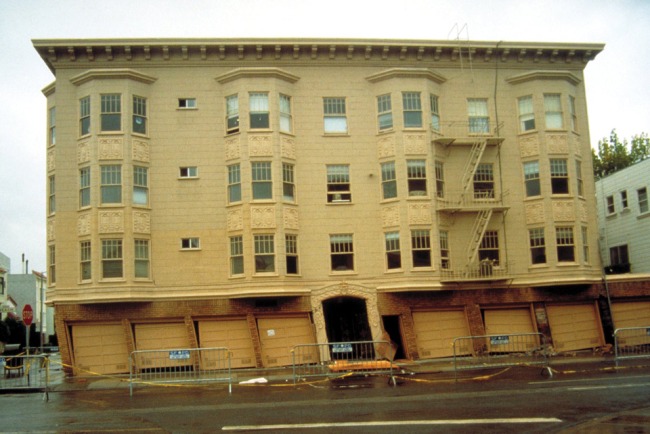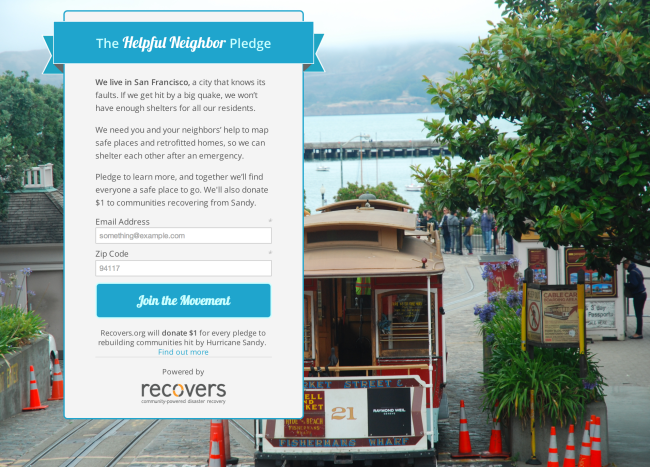Crossposted from: recovers.wordpress.com
Low vacancy, numerous homeless people, elegant old buildings, shuttle buses to Silicon Valley… and warning, I’m going to talk about earthquakes. If it gets scary, stick with me: there’s good news at the end, ways to better understand the specific risks facing San Francisco, and some easy places to start.
Let’s Talk Numbers
After the 1989 Loma Prieta earthquake, 11,500 Bay Area housing units were uninhabitable. If there was an earthquake today, the current estimate (from SPUR) is that 25 percent of San Francisco’s population would be displaced for anywhere between a few days to a few years. However, San Francisco’s top shelter capacity can only serve roughly 7.5 percent of the overall population. And that is only for short term stays in places like Moscone center. So where would the remaining 17.5 percent of the population go?
1. Some people may decide to leave the city and start over somewhere else (something called “outmigration,” which is not ideal for the economic health of a city).
2. And some people take longer term housing in vacant units around the city. But this is particularly tough in San Francisco because vacancy is currently at an all time low of about 4.2 percent vacant units.
3. This brings us to the most ideal scenario: staying put. Something referred to in the emergency management world as “shelter-in-place.”
What is Shelter-in-Place?
Shelter-in-place is “a resident’s ability to remain in his or her home while it is being repaired after an earthquake — not just for hours or days after an event, but for the months it may take to get back to normal. For a building to have shelter-in-place capacity, it must be strong enough to withstand a major earthquake without substantial structural damage. […] residents who are sheltering in place will need to be within walking distance of a neighborhood center that can help meet basic needs not available within their homes.”
A recent report from Spur’s “Safe Enough to Stay” estimates that San Francisco needs 95 percent of it’s housing to be shelter-in-place. But currently there are 3,000 addresses (15 percent of the population) that are in a scary thing called “soft story buildings.”
A soft story building is characterized by having a story which has a lot of open space. Parking garages, for example, are often soft stories, as are large retail spaces or floors with a lot of windows.
Live in SF? What you can do:
- For starters, find out if you’re house is on the list of soft story buildings, here. And today, the San Francisco Board of Supervisors is voting on a “Mandatory Seismic Retrofit Program” which will make residents, or their landlords, mandatory to fix these buildings. Might as well check your block, while you’re at it. If you are a renter, contact your landlord. If you’re an owner, look into some seismic retrofitting.
- Check out what sort of liquefaction zone you’re in in the map above. If you’re in one of the better zones, plan to stock what you need for at least 72 hours while the bigger emergencies are dealt with.
- Sign up here to join other San Franciscans looking for better tools to deal with these issues and we’ll keep you up to date. At Recovers, we’re trying to help San Francisco prepare — and prepare smartly.
Have an idea or question? Get in touch. We want to help.
Questions? Comments? Hit us up @codeforamerica.





Leave a Reply
You must be logged in to post a comment.